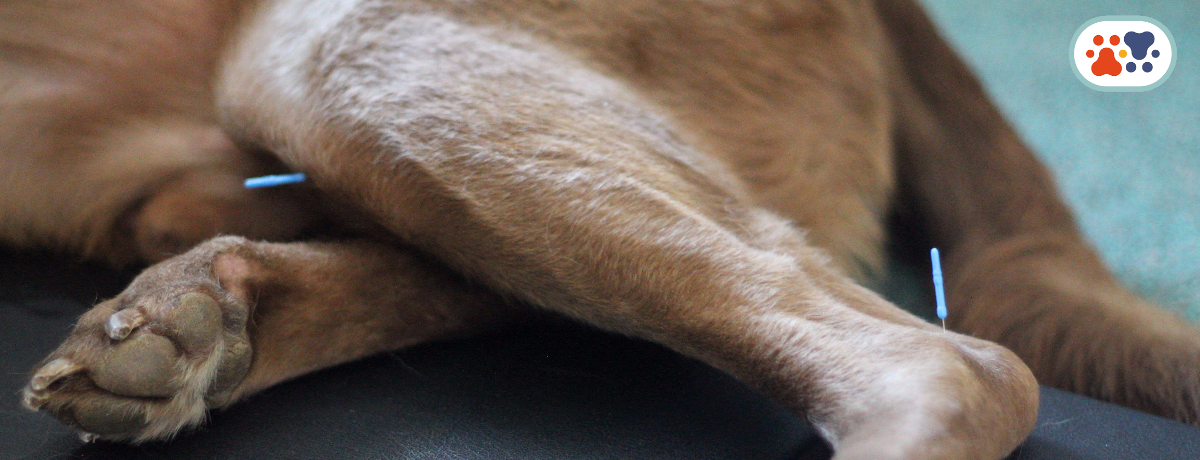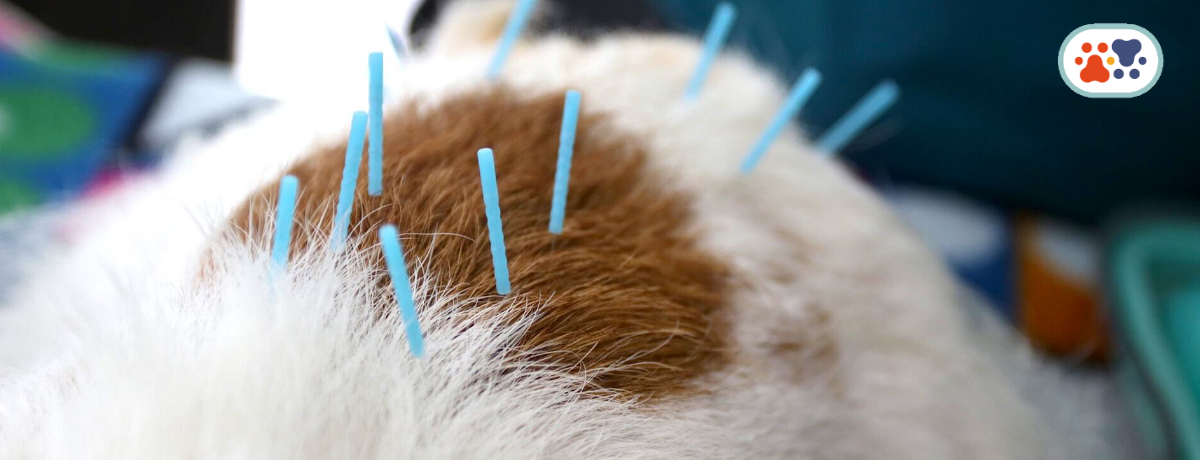

PAWS Animal Hospital is proud to announce new treatment methods to help keep your pet as comfortable and healthy as possible. Health can be defined as the balance in an individual's body as well as the balance between body and mind and between the individual and their environment.
Want to learn more about Paws in Balance?
Click on any of our FAQs below to learn more about our PAWS in Balance acupuncture offerings. If you don't see what you're looking for or have any questions not answered here, please give us a call, use our contact form, or stop in and we'll be happy to help you!
Traditional Chineese Veterinary Medicine (TCVM) has our main components: acupuncture, herbal medicine, food therapy, and Tui-na (medical manipulation). acupuncture usually involves the insertion of thin sterile needles into discrete and specific points on the body in order to cause a therapeutic effect, but may include other methods such as electrical stimulation and moxibustion. The point onthe body is call "Shu-xue" or acupuncture point (acupoint). The ancient Chinese discovered 361 acupoints in humans and 173 acumpoints in animals.
acupuncture has been practiced in both animals and humans for thousands of years in China. The earliest veterinary acupuncture book,"Bo Le Zhen jing" (Bole's Canon of Veterninary Accupunture), is believed to have been written by Dr. Bo Lein the Qin-mu-gong period (659 B.C.E. to 621 B.C.E.). Veterinary treatment protocols using acupuncture are well-documented in this textbook. Since then, acupuncture has beena part of the mainstream veterinary medical system in China.
Modern research shows that acupoints are located in the areas where there is a high density of free nerve endings, mast cells,small arterioles, and lymphatic vessels. Most acupoints are motor points. A great number of studies indicate that the stimulation of acupoints induces the release of beta-endorphins, serotonin,and other neuro transmitters.
Yes! Acupuncture is a very safe medical procedure when administered by a qualified practicioner. Very few negative effects have been found in clinical cases.
Each session may take 20 to 45 minutes; the first session usuallytakes longer than follow-up appointments.
Some results can be seen immediately but others will require several treatments. Generally, a minimum of 3 to 5 treatments 1 to 2 weeks apart for chronic conditions are needed before one can expect noticable improvement.
As in all medicine, this depends on the situation and treatments can be done daily, weekly, monthly, or even further apart depending on the severity and chronicity of the condition.
Rarely! Acupuncture is not painful because acupuncture points are stimulated using very fine needles, almost as thin as hair. Over 95% of patients are comfortable with acupuncture therapy. Due to the relaxaction effect, some animals will fall asleep during acupuncture treatments. In general, sedation is not needed before an acupuncture treatment.
Only licensed veterinarians are qualified to practice veterinary acupuncture in most states in the USA. A veterinarian that is certified in acupuncture is highly recommended. A certified veterinary acupuncturist (CVA) can be found at www.tcvm.com
Studies have shown that acupuncture stimulation induces the following physiological effects:
- Pain Relief
- Promotion of tissue healing processes
- Regulation of gastrointestinal motility
- Anti-inflammatory effects
- Immunoregulation
- Hormone and reproductive regulation
- Antifebrile effects
Clinical trials indicate acupunture therapy can be effective in the following conditions:
- Musculoskeletal problems: muscle soreness, back pain, osteoarthritis, and degenerative joint disease
- neurological disorders: seizures, intervertebral disc disease (IVDD), laryngeal hemiplegia, and facial and radial nerve paralysis
- Gastrointestinal disorders: diarrhea, gastric ulcers, colic, vomiting, constipation, and impactions
- Other chronic conditions: skin problems, heaves, asthma, cough, uveitis, renal failure, chronic liver diseases, behavioral problems, infertility, Cushing's disease, hypothyroidism, hyperthyroidism, geriatric weakness, and anhidrosis
- Quality of life, cancer,and hospice care
- Performance enhancement and the prevention of disease
Acupuncture should be used with caution in the following conditions: fractures, pregnancy, and open wounds and tumors
Many acupuncturists choose to combine acupuncture with herbal medicine because the use of herbs enhances the effectiveness of acuputure?
The veterinarian may choose to use Tui-na, a form of Chinese manipulative therapy often used in conjunction with acupuncture and Chinese herbs. From a conventional medicine perspective, Tui-na can be thought of as corresponding to a combination of acupressure, conventional massage, and chiropractic techniques. It can be used to treat both acute and chronic musculoskeletal conditions, as well as many non-musculoskeletal conditions as decided by the attending veterinarian.
Western medicine has relatively recently recognized the positive effect that dietary changes have on many behavior and skin conditions. However, TCVM has long recognized the importance of food therapy in the treatment and prevention of illness. Therefore, TCVM practitioners may recommend the implementation of special food or the elimination of certain food that the animal is currently being fed based on the Chinese Food Energetics classification and TCVM diagnosis.
